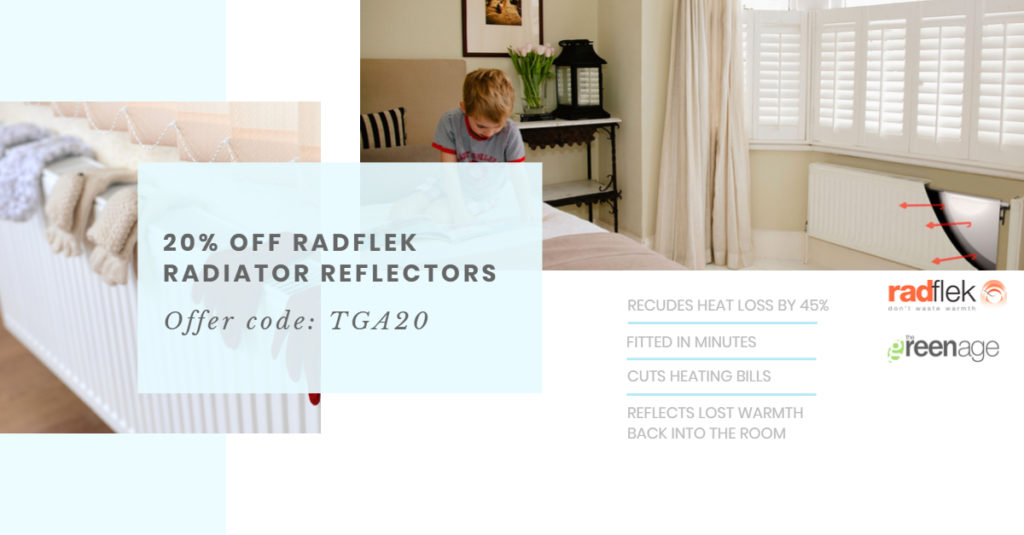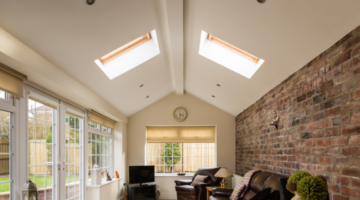
You may have heard about terms such as convection or radiant heating, but have always been confused about the fundamental differences. In this blog we will explain how both heating methods work and demonstrate with examples which tools perform this job.
What is convection heating?
Convection heaters heat the air and then transfer the heat throughout that space to warm up people and physical objects. For example, your gas boiler central heating system is a perfect example of a predominantly convection based system. When you turn on your heating, the radiators warm up as the water that circulates in the system gets hotter. After 15-20mins or so you can feel the room getting warmer as that heat is distributed from the surface area of the radiators into the room.
Warm air rises and gets moved into cold spaces such as the middle of the room, where it cools, sinks and circulates back up again as it is warmed up. Eventually the whole volume of air warms up, which gives you the warmth that you feel.
Other examples of convection heating
Storage heaters – like your wet central heating system, the storage heaters will warm a room by released warm air, which may also get pushed with higher velocity using assisted fans.
Electric Panel heaters – like storage heaters, these heaters will push out warm air into a physical space warming it up.
Underfloor heating – most common solutions are wet systems powered either by boilers or heat pumps and like the radiator concept above the heating is distributed the same way – warm air rises and cools until it heats the physical space warming everything around it.
Fire places – burning a fuel such as coal, gas or wood creates heat. The fuel requires moving air to ignite, so sucks up the cold air and released warm air as a by-product.
Limitations of convection heating
There are a couple of downsides to convection heating. Firstly, it relies on the movement of air and although the method of heating itself promotes that, avoiding cold spots is still incredibly difficult. So you tend not to see even temperatures throughout the room with convection heaters. Secondly, holding the heat in the air isn’t particularly stable. Imagine spending half an hour heating the temperature in the air up to 21oC only for someone to briefly open the door. Lots of that heat will escape, which your convection heater will have to replace.
 What is radiant heating?
What is radiant heating?
Radiant heating simply uses radiation to heat surfaces of objects. Unlike convection heating that heats the air, radiant heating emits infrared radiation, which travels unimpeded until it hits a solid object, which absorbs the radiation and warms up. A good everyday example of this in practice is the sun – this is why when it is particularly chilly, you can still feel the warmth as the sun shines on your face.
Radiant heating is more direct that convection heating, so people and objects in theory should feel the warmth a lot quicker, despite the air around being at a lower temperature. Once the objects warm up as a result of the radiant heating, they should at this point gently give off heat to the surrounding air. Although radiant heating has been around for a long time as a concept, it is only now beginning to gain some momentum in the UK.
Radiant heating in the form of Infrared Heating Panels is on the rise in the UK. The basic idea is that instead of holding the heat in the air, like convection, it holds the heat in the thermal mass of the room. So if a door opens, replenishing the lost heat becomes a lot easier as the infrared panels turn the room into a 360o radiator.
Examples of radiant heating
Infrared heating panels – (far infrared) in the residential and commercial space, these far infrared heaters can be installed in the walls or the ceilings and emit invisible infrared heat to the targeted areas.
Halogen heaters – (near infrared) you would have seen these in pubs and railway stations – essentially they glow a bright orange and emit heat as they get hot.
Is radiant heating any good?
Now, it is understandable the public is a little more sceptical to this form of heating since convection is a more common way of heating in the UK. Also people are worried as soon as they hear the word ‘radiation’ as they automatically think it is a bad thing. Taking those two points separately below:
With the infrared heating panels (a common radiant heating source) they are actually becoming a lot more widely accepted, since they have had a long track record in Germany, Austria and Scandinavian countries, which have used the technology for a number of years.
Infrared radiation is completely safe and should not be confused with UV light, which is harmful and folks should stay away from. Lots of things emit infrared – the warmth of the sun, and the warm feeling you get in front of a fire.













Thank you – at last an article that gives a clear and comprehensive explanation of the difference. I have read several ‘explanations’ but none helped, the main reason being that it seemed to me that a household ‘radiator’ is actually a convection heater – so I was confused, thinking that I was misunderstanding. But actually ‘radiators’ are incorrectly named.
Hi Hayley, glad this article cleared things up for you!
Not sure I totally agree with the description?
Underfloor heating systems will heat up surface material (floor) that will use radiation to heat the room in combination with convection of the cold air mass at the floor level in about 60:40 ratio.- it is more effective to distribute heat as the whole floor will act as a single radiator. How much heat is needed to warm up the floor is depending on insulation and material/thickness to reach the upper floor?
If one places a heating panel/foil in the ceiling there is hardly any convection and most heat is done by radiated infrared heat of objects, eventually, the air hits the objects in the room and some convection will appear.
PS. Heating panels and foil has the best heat distribution and more effective in reaching the desired temperature faster
Radiant heat is used in industrial processes and was widely used with steam heating. The biggest disadvantage of far radiant is that the radiant heat source to be effective it is normally at a temperature where you are unable to touch it without discomfort, surfaces temperatures typically reach 95 degrees Celsius, The second disadvantage is it will not stop your pipes from freezing unless the heat is radiated directly onto them. You will still need to rely on convection for that function. The biggest advantage is that it can be used in open spaces. Underfloor heat relies on convection, as well as radiation what is the use of heating the bottom of someone’s chair and not heating the person? The hot floor surface heats the air immediately above it which then starts circular air convection within the room. The radiation from floor heating is also limited by the low amount of heat emitted by the floor (per cm squared). If the floor temperature is too high then our feet and legs become tired and even painful. Finally, to put things into perspective If you are sitting with your feet up on your sofa, then you are being warmed by convected heat not radiant heat from your floor. Heat convected through the air and through the sofa.